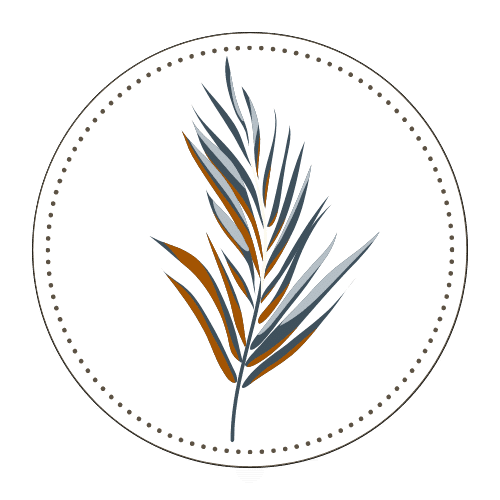Many people wonder why prescription drug abuse is such a common problem without knowing the factors that impact Abuse of Prescription Drugs.
At Calusa Recover, individuals can receive comprehensive care for their prescription drug abuse. The medical professionals at Calusa are dedicated professionals familiar with and trained to support individuals through rehabilitation from substance abuse and multiple comorbid mental health disorders.
Learn more about why prescription drug abuse is so common by speaking with a professional at Calusa Recovery today.
Calusa Recovery is a Fort Myers drug and alcohol rehab center that can help you overcome your substance use disorder.
Why Prescription Drug Abuse is Common: Understanding the Root Causes
The abuse of prescription drugs is a common problem for individuals across the United States because of the wide availability of medication, improper monitoring protocols, availability of similar street-level drugs, and lack of appropriate comprehensive care.
The first significant concern prescription drug concern is the availability and over-prescribing of addictive medication in the United States. Opioids and opiates are one of the most commonly prescribed medications. Because of the extensive uses of the medication, it is prescribed for everything from knee pain to post-surgery care, cancer care, and even for individuals experiencing severe diarrhea or coughing because it slows down and depresses the systems in the body. This wide variety of uses makes it available to many populations and age groups.
The lack of proper monitoring protocols for prescribing the medication, with its quickly addicting nature, makes it even more dangerous. When an addictive medication is not correctly monitored, individuals run the risk of rapidly developing problematic use, which, if not identified, can turn into an addiction.
Additionally, prescription medications, especially opioids, often have similar street-level drugs with wide availability. This means that when an individual develops symptoms of problematic use but cannot stop (early stages of addiction), they have other options to obtain a similar state.
Lastly, prescription drug addiction treatment is not as widely available as illegal drug addictions. Therefore, individuals addicted to prescription drugs need a more comprehensive form of care that addresses their addiction and the initial need for the prescription, especially if it is a chronic mental or physical health concern.
Which Prescription Drugs Are Most Commonly Abused?
The most commonly abused prescription drugs are opioid narcotics, benzodiazepines, and amphetamines.
Opioid narcotics are one of the most dangerous and easily abused prescription drugs. These painkillers are prescribed for a multitude of reasons, and they are accessible to misuse because pain and need are subjective.
Lastly, amphetamines are prescription medication that is commonly abused. Amphetamines are most commonly prescribed to individuals with ADHD. This medication is closely related to methamphetamine. It acts as a stimulant that helps to focus and concentrate an individual’s mind.
Signs and symptoms of prescription drug abuse
Recovering from prescription drug addiction is a challenging process, but it is possible with the right strategies and support. Here are some steps that can aid in breaking free from this harmful cycle:
1. Acknowledgment and acceptance: The first step towards recovery is acknowledging the problem and accepting the need for change. This can be a difficult process, but it is crucial in paving the way for a healthier future.
2. Seeking professional help: Consulting a healthcare professional, such as a doctor or addiction specialist, is vital in developing a personalized treatment plan. They can provide guidance, prescribe medications if necessary, and monitor progress throughout the recovery journey.
3. Therapy and counseling: Individual and group therapy sessions can be invaluable in addressing the underlying causes of addiction, developing coping mechanisms, and building a support network. Cognitive-behavioral therapy (CBT) and motivational interviewing are commonly used approaches in treating prescription drug abuse.
4. Medication-assisted treatment (MAT): For individuals struggling with opioid addiction, medication-assisted treatment can be highly effective. Medications such as methadone, buprenorphine, and naltrexone can help manage withdrawal symptoms and cravings, allowing individuals to focus on their recovery.
5. Lifestyle changes: Adopting a healthy lifestyle is crucial in maintaining sobriety. This includes regular exercise, balanced nutrition, and prioritizing self-care. Engaging in activities that promote physical and mental well-being can help individuals cope with stress and prevent relapse.
6. Building a support system: Surrounding oneself with a supportive network of family, friends, and peers in recovery can provide encouragement, accountability, and a sense of belonging. Support groups, such as Narcotics Anonymous (NA), can be instrumental in connecting with others who have shared experiences.
Breaking free from prescription drug addiction: Steps to recovery
Seeking professional help is a crucial step in overcoming prescription drug abuse. Healthcare professionals, such as doctors and addiction specialists, are trained to provide the necessary support and guidance throughout the recovery process. They can assess the severity of the addiction, identify any underlying mental health conditions, and develop an individualized treatment plan.
When seeking professional help, it is important to be honest and open about the prescription drugs being used, the frequency and dosage, as well as any co-occurring medical or mental health conditions. This information is essential in developing an effective treatment strategy and ensuring the safety and well-being of the individual.
Support groups and resources for overcoming prescription drug addiction
Preventing prescription drug abuse requires a collaborative effort from healthcare providers, policymakers, and the community as a whole. Some key strategies to prevent prescription drug abuse include:
1. Education and awareness: Increasing public awareness about the risks and consequences of prescription drug abuse is essential. This can be achieved through educational campaigns, community outreach programs, and school-based initiatives that educate individuals about the proper use and disposal of prescription medications.
2. Prescription drug monitoring programs: Implementing prescription drug monitoring programs can help identify individuals at risk of abusing prescription drugs. These programs track the prescribing and dispensing of controlled substances, allowing healthcare providers to identify potential misuse or diversion.
3. Safe disposal practices: Encouraging individuals to properly dispose of unused or expired medications can prevent them from falling into the wrong hands. Providing convenient and accessible drug take-back programs or promoting at-home disposal methods can help reduce the availability of prescription drugs for abuse.
4. Responsible prescribing practices: Healthcare providers play a crucial role in preventing prescription drug abuse by prescribing medications responsibly. They should assess each patient’s medical history, conduct regular follow-ups, and consider alternative treatment options whenever possible.
Preventing prescription drug abuse in the community
Healthcare providers play a vital role in addressing prescription drug abuse. They can:
1. Screen patients for substance abuse: Conducting routine screenings for substance abuse can help identify individuals at risk and intervene early. Screening tools, such as the Drug Abuse Screening Test (DAST), can be utilized to assess the severity of drug abuse.
2. Educate patients about the risks: Healthcare providers should educate patients about the risks and potential consequences of prescription drug abuse. This includes discussing the importance of adhering to prescribed dosages, avoiding sharing medications, and the potential for addiction and overdose.
3. Promote non-pharmacological alternatives: Whenever possible, healthcare providers should explore non-pharmacological alternatives, such as physical therapy, cognitive-behavioral therapy, or alternative pain management techniques, before resorting to prescription drugs.
4. Monitor patients on long-term medications: For patients requiring long-term use of prescription drugs, regular monitoring and follow-up appointments are crucial. This allows healthcare providers to assess the effectiveness of the medication, identify any adverse effects, and prevent misuse or abuse.
Seeking professional help for prescription drug abuse
In addition to professional help, support groups, and resources can play a crucial role in overcoming prescription drug addiction. These groups provide individuals with a safe space to share their experiences, receive encouragement, and learn from others who have successfully navigated the recovery journey.
Narcotics Anonymous (NA) is a widely recognized support group specifically tailored for individuals struggling with drug addiction. NA follows a 12-step program that emphasizes self-reflection, acceptance, and spiritual growth. Attending NA meetings can provide individuals with a sense of community, accountability, and ongoing support.
Other resources include online forums, helplines, and educational websites that offer valuable information, tools, and strategies for overcoming prescription drug addiction. These resources can be accessed anonymously and provide individuals with a wealth of knowledge and support at their fingertips.
Comprehensive facilities like the resources at Calusa Recovery provide clients with start-to-finish treatment. Learn more about prescription drug rehab at Calusa Recovery by speaking with an admissions counselor today.
Conclusion: Hope and healing from prescription drug addiction
Prescription drug abuse is a growing problem that often goes unnoticed due to its silent nature. Individuals may start using prescription drugs for legitimate reasons, such as managing chronic pain or mental health disorders, but over time, they may develop a dependency that spirals into addiction. The effects of prescription drug abuse can be devastating, impacting not only the individual’s physical health but also their relationships, career, and overall quality of life.
One of the most significant dangers of prescription drug abuse is the potential for overdose. Many prescription medications, such as opioids and sedatives, can depress the central nervous system, leading to respiratory depression and, in severe cases, respiratory failure. Additionally, the misuse of prescription drugs can cause liver damage, cardiovascular problems, and cognitive impairments.
Moreover, abuse of prescription drugs can lead to psychological issues, including depression, anxiety, and paranoia. The constant cycle of acquiring and using drugs can consume an individual’s thoughts and lead to a decline in their mental well-being. The effects of prescription drug abuse extend beyond the individual, affecting their loved ones who may witness the destructive behavior and struggle to understand how to help.










